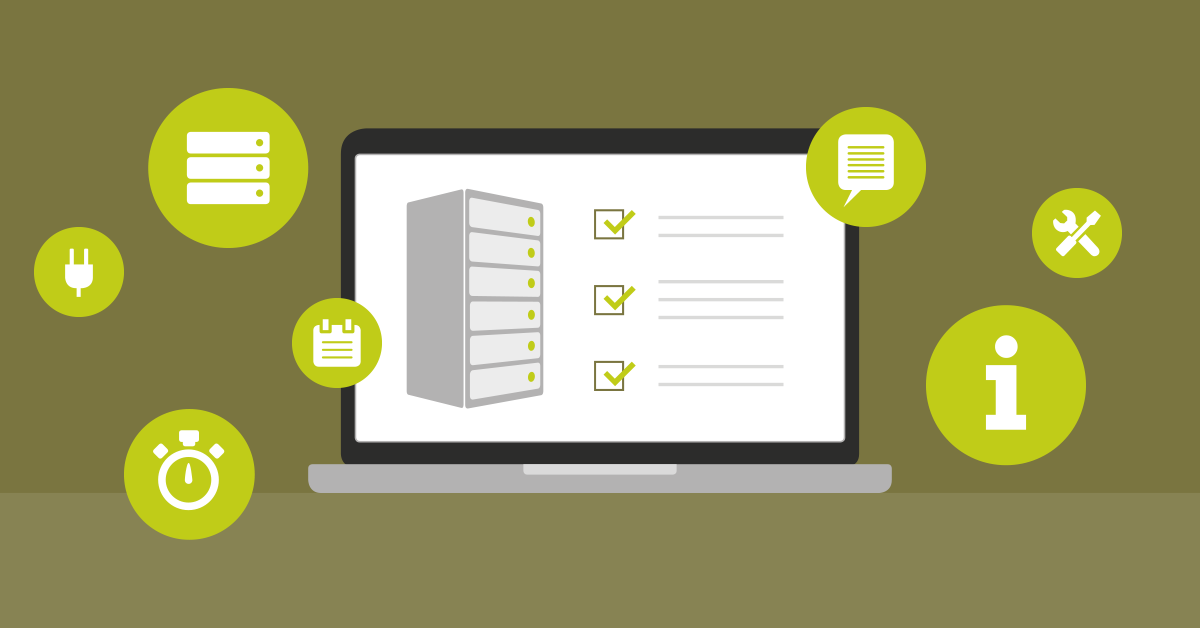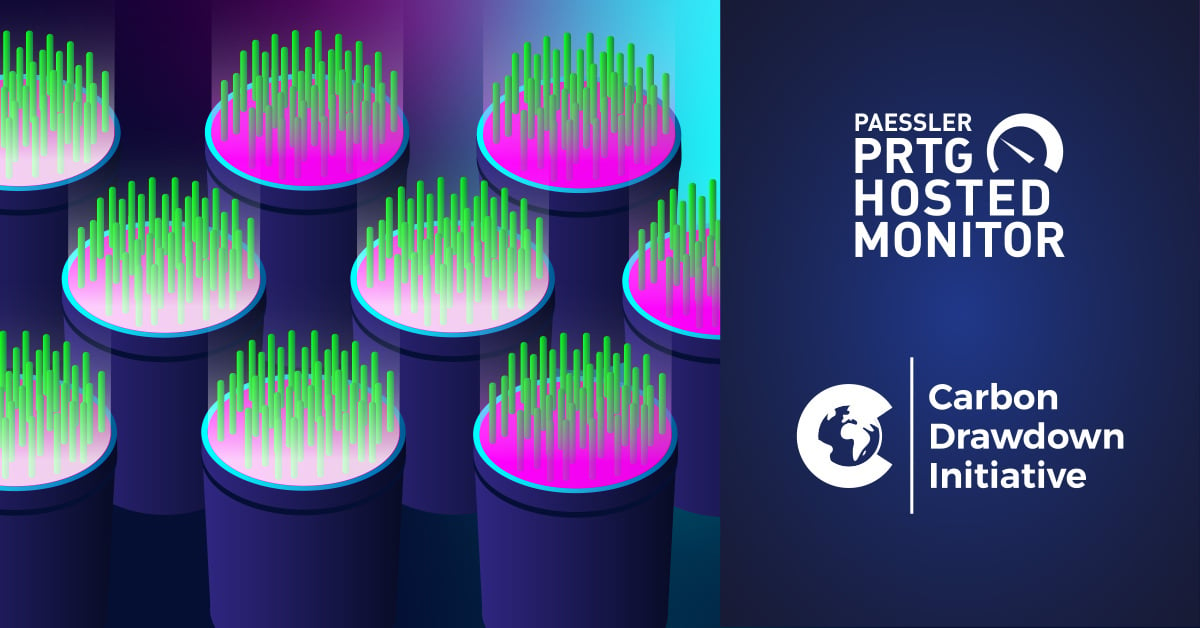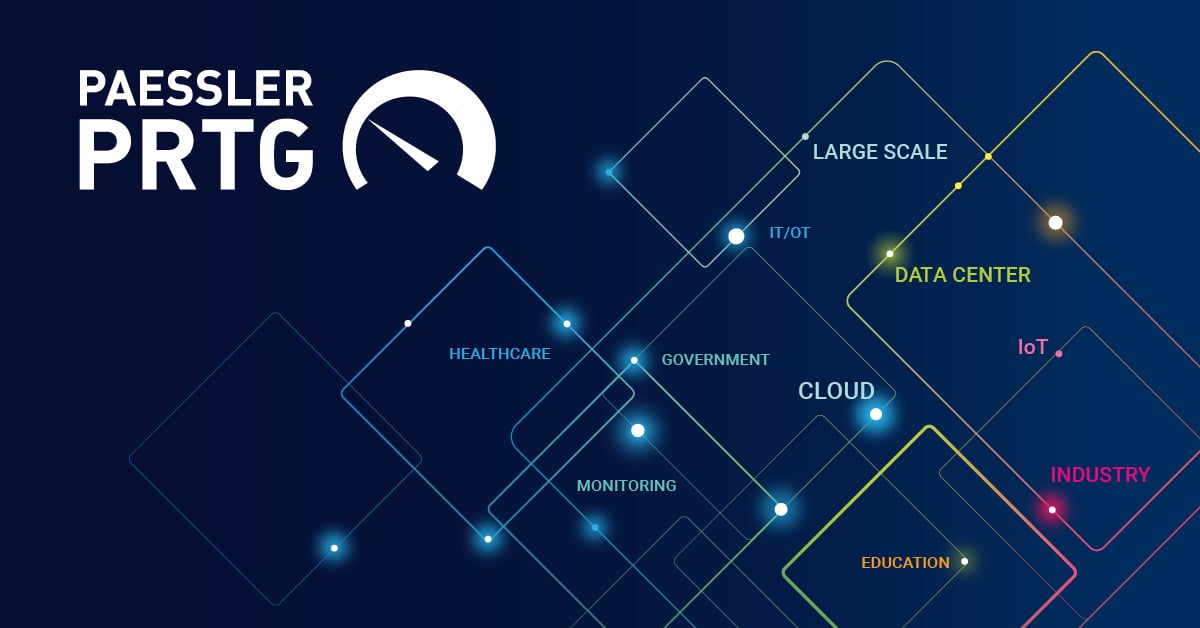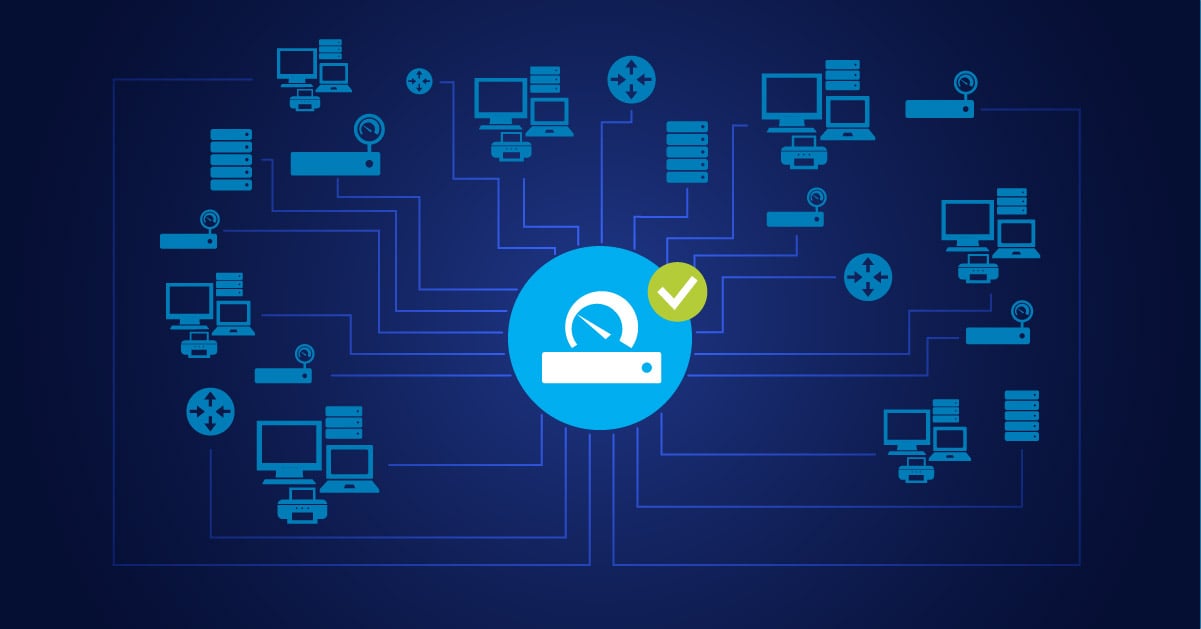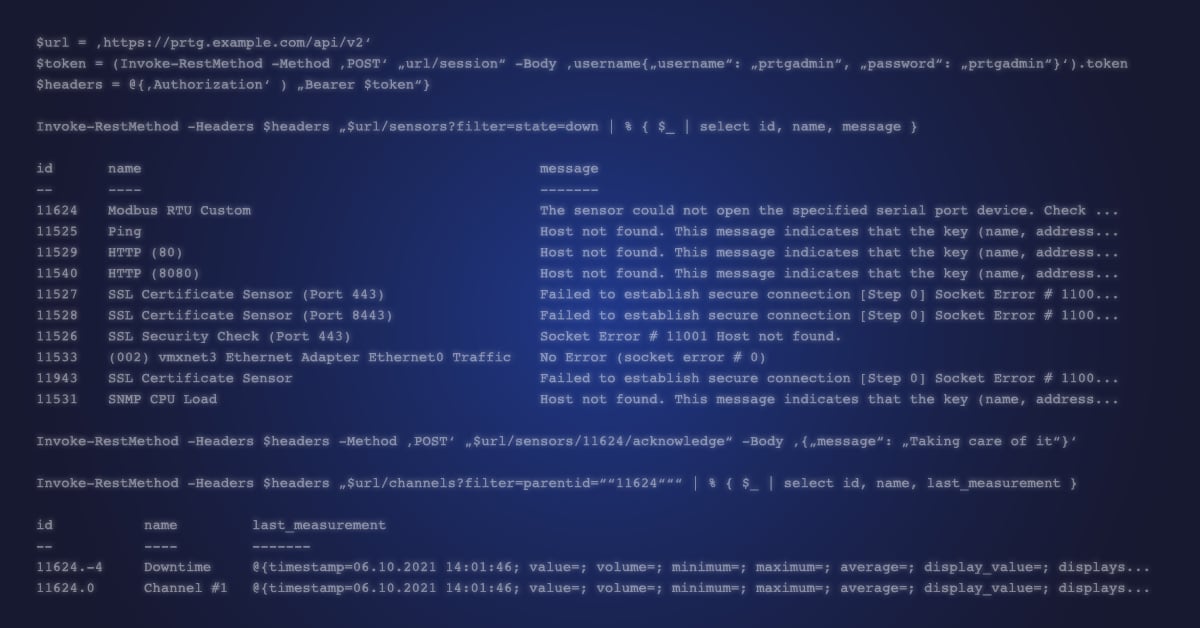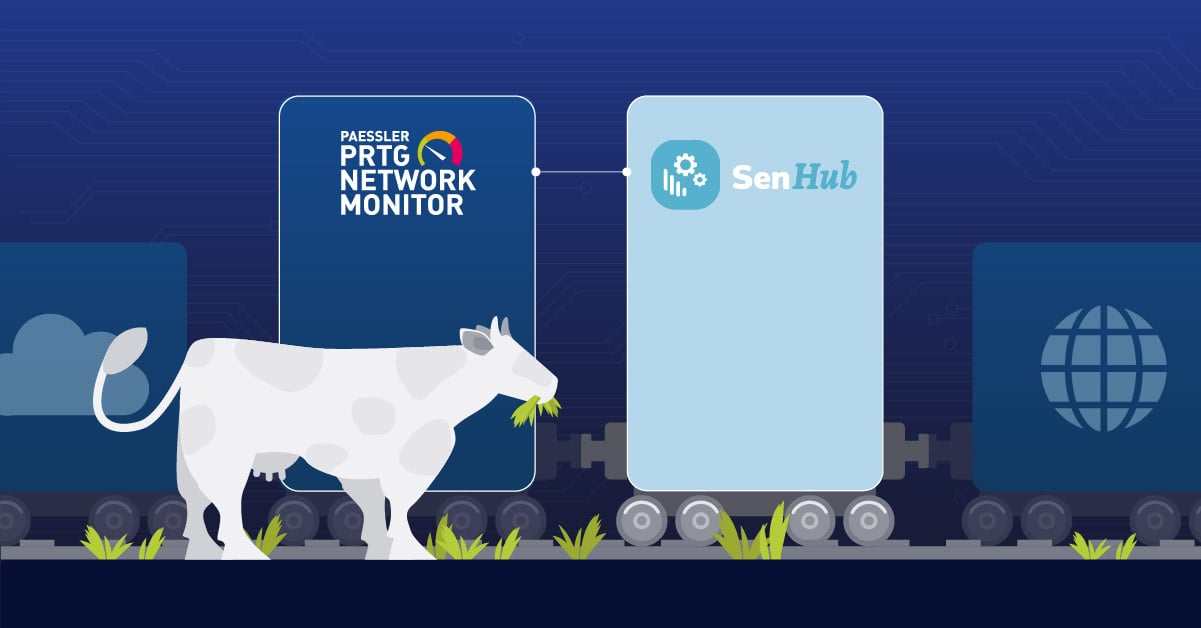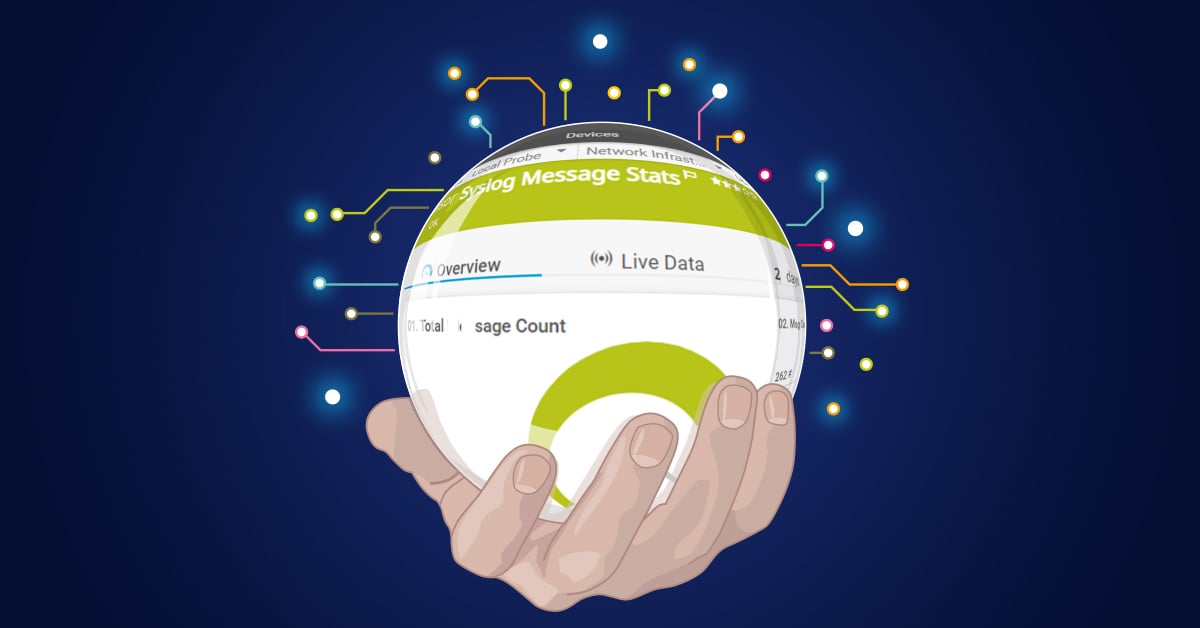From time to time, all administrators must temporarily shut down an important service, either for routine maintenance or to upgrade to a newer version. This article gives recommendations on IT maintenance communication, including message templates and what your scheduled maintenance message should contain. As a company with 300 employees all over the world, we know from experience that it is crucial to communicate very clearly during maintenance periods in order to avoid confusion, disruptions, and loss of productivity.
PRTG sensors help you continuously monitor your network infrastructure. Use the insights PRTG sensors provide to schedule your maintenance windows outside peak hours and when your users are least affected. With PRTG's maintenance window functionality, you can automatically pause monitoring during planned downtime and avoid false alarms when the servers are knowingly in maintenance mode.
Schedule Maintenance Messages for Maximum Impact
Whenever possible, give your users a few days' notice for planned downtime through a maintenance notice or announcement email. This ensures that your users have enough time to plan their work in advance, and work disruptions will be minimized. Larger system maintenance with wider impact require a longer lead time. Maintenance on critical systems with server monitoring should be announced at least one week in advance; smaller routine maintenance activities one or two days in advance.
In most cases, a single maintenance email is not sufficient. Depending on the level of impact you can expect from the outage, send a message one week in advance, one few days in advance, one the day before and one the day of the scheduled maintenance. Use email templates or message templates to ensure consistency across your maintenance process. If it is not the first time that the system goes down, the users will probably not even remember one single notification, so your multiple notices keep reminding them that the upcoming maintenance is coming.
Don't forget to send a follow up message once the systems are back online and out of maintenance mode. PRTG sensors will automatically resume monitoring after your maintenance window ends, immediately alerting you to any problems that require your attention and ensuring optimal user experience.
Choosing When to Schedule Maintenance Windows
For planned downtimes, pick a time that will be as little inconvenience to the largest number of users as possible, avoiding peak hours when system usage is highest. If your users are distributed all over the globe across multiple time zone regions, it will always be at the inconvenience of at least a few. But if you have some time zones where the user count is much lower than others, then plan your maintenance activities to align with those lower-usage periods. Admittedly, this often means it will be a very inconvenient time for the system administrators. But in the interest of the company as a whole it is better to inconvenience a few of its administrators than large parts of the business.
PRTG Sensors to Plan Maintenance Messages and Windows
PRTG's diverse sensor lineup provides helpful insight to inform the planning of your maintenance messages and your maintenance windows. Here are some sensors that can enhance your maintenance communication plan:
Network Usage
PRTG sensors keep track of the bandwidth utilization across your network. Identify the best times for scheduled maintenance when network usage is lowest, outside peak hours, and usage patterns change over time. Use SNMP sensors and WMI Network sensors to access network adapter statistics and Bandwidth sensors to measure traffic.
Automated Maintenance Windows
PRTG supports monitoring of up to several thousand sensors per installation, and includes powerful notification and alert scheduling features. The system includes the maintenance window functionality, where you can define one-time maintenance windows to automatically pause monitoring for selected objects and all of its child objects during defined maintenance periods. PRTG's maintenance window feature nicely complements your scheduled maintenance message strategy by allowing your monitoring system behavior to mirror your communication timeline.
Dependency Management
PRTG allows you to configure sensor dependencies, so that when a master sensor is paused for system maintenance all sensors that depend on it automatically pause as well, resulting in monitoring behavior that matches your maintenance communication timeline.
PRTG's maintenance window feature allows you to define a start time and end time for a maintenance window. During this maintenance period the sensor will not collect monitoring data, will not change status, and will not trigger notifications. An object will keep its paused status even after PRTG is restarted.
Multi-Channel Maintenance Communication Strategy
If possible, send users a notification of the upcoming downtime using multiple different channels. Email is the primary medium used for maintenance messages, but you can also use social media platforms like LinkedIn, your web page with maintenance pages or pop-up notifications, SMS alerts, internal communication methods (eg. Microsoft Teams) or the application's start page, as appropriate. The most effective medium will depend on whether you are communicating with internal users, existing customers, or the general public.
In the case of application monitoring or certain types of software, the notification regarding the upcoming maintenance can be placed on the login page or on the main start page a few days before the downtime starts, so the users are able to schedule their work around it. Consider using pop-up notifications or dedicated maintenance pages. Do not simply put a message in a Web application that the application is currently unavailable - give the users enough time to plan their work around the downtime.
If the affected application is a smartphone app, then you can add in-app alerts or push notifications.
If you are providing a service over the Internet and it is these services that will be unavailable, then you can use an online status page website monitoring solution such as StatusPage by Atlassian or Constant Status. These status page tools help communicate relevant information about outages and maintenance activities to your users.
Integrating with your Monitoring Tool
Modern maintenance messages should also integrate with your network monitoring infrastructure. PRTG offers several notification options that nicely complement your IT maintenance communication strategy:
- PRTG notifications can be scheduled to automatically notify administrators when maintenance windows begin and end, providing relevant information about the maintenance process
- Sensor dependencies will ensure that server maintenance on critical systems does not cause false alarms on dependent systems
- Custom sensor scripts can be written to automatically update status pages or internal communication tools
Communication Essentials for Maintenance Messages
Just as we all learned in school, make sure that your message contains answers to all of the "W" questions: Who? What? When? Where? Why? and How?
Maintenance Messages Checklist for Easy Reference:
1. Type of Notification and Severity Level
- Clearly identify as "Scheduled Maintenance" or "Emergency Maintenance"
- Indicate level of severity (Minor, Major, Critical)
2. Reach and Systems Affected
- Indicate affected systems, services or applications
- List unavailable functions and expected user experience impacts
3. Exact Start Time and Estimated End Time
- Provide time zone information for all relevant regions
- Give duration estimates and estimated time for completion
- Allow for potential delays in the maintenance process
4. Overview of the Work to Be Performed
- Brief explanation of the work being performed
- Benefits or improvements to be expected
5. Action Required by Users
- Preparation steps that users need to perform before maintenance
- Any preparation required by users
- Alternative workflows to be used during downtime
6. Contact and Follow-up Information
- Contact information including email and phone number to whom users can send questions
- When the next update will be sent
- Means by which users will be notified when maintenance is completed
Additional Information To Consider Including:
- Root cause for the issue being addressed
- Previous attempts to fix the issue
- Long-term prevention methods to be implemented
- Rollback procedures if something goes wrong
- Information about backups and data protection during maintenance
Writing Clear Maintenance Messages
Keep it short and clear. If your email isn't short and to-the-point, it will get deleted unread. Format the text so that the most important details can be quickly seen.
Adjust the amount of technical detail to your audience. If the audience is mainly non-technical, a high-level overview is enough. Don't burden them with technical details they won't understand. But on the other hand, don't leave your technical users high and dry by not giving them enough information. Your users who are technically savvy will expect to know the details and will thank you for being as comprehensive as possible. Companies featured on Product Hunt and platforms like LinkedIn often share best practices for transparent communication. GitLab is a great example of being completely transparent when they accidentally lost some production data and even live-streamed the process of recovering from the incident.
Be polite and professional and stick to the facts in your announcement email. Do not blame other people or departments for the downtime (even if other people are responsible) and do not disparage your vendors or other departments. Your maintenance message is assumed to be read by senior management and all of the other departments or vendors. Root cause discussions should be done directly with the parties involved, not by sending a blast email template to all users.
Communication Best Practices for Follow-up
After your maintenance window is over, send a follow up message using your email template that includes:
- Confirmation that the maintenance is completed
- Changes the users need to be aware of
- Steps to take if they encounter issues
- Performance improvements or new features they can use
- Thanks for their patience during the maintenance window
Metrics for Success
Track how well your maintenance messages perform by monitoring:
- Helpdesk ticket volume during and after maintenance
- Feedback from users regarding clarity of communication
- How closely scheduled maintenance windows are adhered to
- Number of users that took recommended actions before maintenance
Summary
Successful maintenance messages are an important factor for user confidence, and minimize business disruptions. In combination with clear communication strategies, message templates, and monitoring tools like PRTG sensors, you can ensure that your maintenance windows are coordinated well, properly communicated, and smoothly executed.
PRTG's maintenance window functionality, sensor dependencies, and automated notifications all work together to support your maintenance communication strategy, and help you prevent false alarms during planned downtime.
Ready to automate your network maintenance with fully automated monitoring? Download PRTG's free trial to see for yourself how PRTG sensors can help you plan maintenance windows, prevent false alarms, and communicate more effectively with your users.
 Published by
Published by 